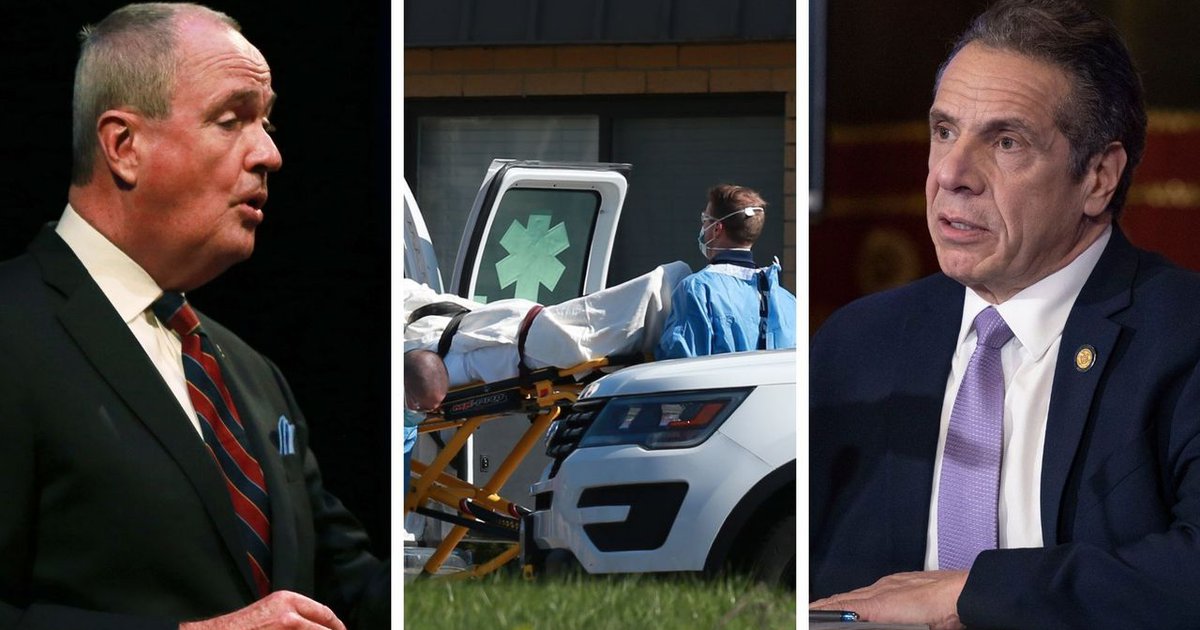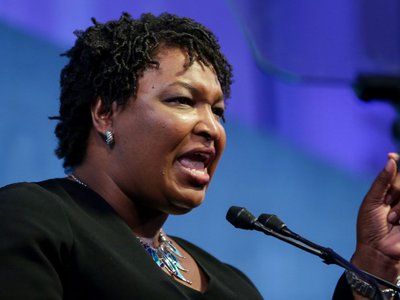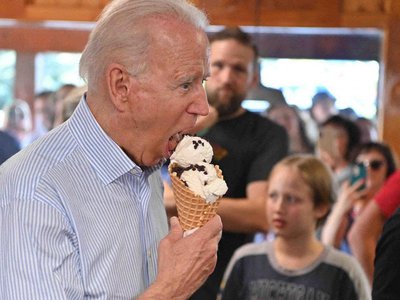The conversation was tense.
New Jersey Health Commissioner Judith Persichilli began the March 31 conference call with hundreds of long-term care facility operators explaining they were expected to allow nursing home patients recovering from COVID-19 to return from the hospital.
But while she made it clear that they would be required to assign separate staff and separate them from other residents — or to let the state know right away if that was not possible — the exasperation on the other end of the phone was palpable.
“Patients will die,” an unidentified administrator declared, according to a recording of the outspoken meeting obtained by NJ Advance Media. “You understand that by asking us to take COVID patients, by demanding we take COVID patients, that patients will die in nursing homes that wouldn’t have otherwise died had we screened them out.”
Nearly 12 months later, questions continue to swirl around the decision to send patients back into nursing homes, both in New Jersey and in New York, two states with the highest number of nursing home deaths nationwide. The directive remains a lightning rod for criticism, amid a belief that lives were lost because of it, even though each state provided alternative housing for nursing homes unable to sequester residents.
The answers to the questions aren’t easy, either.
New Jersey seems to have handled the situation better — and Gov. Phil Murphy has thus far avoided the growing criticism currently imperiling Gov. Andrew Cuomo’s office that has already drawn in his state’s attorney general. But the directive remains controversial, and, both governors say widely misunderstood.
For Murphy, Republican lawmakers at a hearing on March 5 charged that it seeded nursing homes with a highly contagious virus that has so far killed more than 8,000 people in long-term care in New Jersey. Families and advocates contend that residents should not have been sent back under any conditions.
Cuomo of New York faces a far more harsh reckoning, in a state where more than 15,000 nursing home residents died from the coronavirus. He has been under fire as well over a similar directive that was much less clear about how homes should isolate residents, although the state did set up dedicated COVID nursing home facilities. At the same time, disclosures that Cuomo — already entangled in an alleged sexual harassment scandal — also deliberately misstated the number of deaths in nursing homes have sparked a reported investigation by the FBI and U.S. Attorney and calls for his resignation.
To be sure, no nursing home in the country was immune from the ravages of SARS-CoV-2, the virus that causes COVID-19. According to The Covid Tracking Project, 34% of all deaths in what is now a year-long outbreak occurred in long-term care settings, or 174,474 people.
Blame for what happened both here and in New York has been wide-ranging.
For both Murphy and Cuomo, though, the directives in each state allowing residents who had COVID to return to nursing homes has been Exhibit A for those seeking to assign blame, and remains a raw wound that will not heal.
In their hearing a week ago, New Jersey Republican lawmakers charged that the directive allowed the virus to spread unabated. “Apparently nobody gives a damn about this loss of life,” said Sen. Declan O’Scanlon, R-Monmouth. “That is shameful.”
In New York, meanwhile, a scathing report last month by Attorney General Letitia James on the handling of the pandemic in that state’s nursing homes also came down hard on Cuomo’s health department for such readmission orders.
The directives in the two states was aimed at freeing up hospital beds that were expected to be overwhelmed by an onslaught of COVID patients.
But what is often not mentioned in criticism of the directive is the role of nursing home operators.
“When a for-profit nursing home has an empty bed, it has a financial motivation to increase its census by admitting residents in order to obtain the daily rate of reimbursement offered by the resident’s payor —Medicaid, Medicare, other federal health insurance, or private insurance,” noted New York’s attorney general in her report.
James said her preliminary investigation indicated that nursing homes in New York took a variety of approaches to decisions to admit residents during the COVID-19 pandemic, even as they were experiencing staffing shortages due to staff illness from, or otherwise inability to work due to, COVID-19.
Under a March 25 advisory, the New York Department of Health stated that “no resident shall be denied re-admission or admission” to a nursing home “solely based on a confirmed or suspected diagnosis of COVID-19.” Nursing homes were prohibited from requiring a hospitalized resident who is determined medically stable to be tested for COVID-19 prior to admission or readmission.
“The March 25th Department of Health guidance was consistent with and followed federal guidance issued by the CDC (the Centers for Disease Control and Prevention) and CMS (Centers for Medicare & Medicaid Services), and was not a directive to accept COVID patients — a point the Attorney General’s office finds the nursing homes understood,” said Gary Holmes, a New York State Department of Health spokesman.
Still, more than 9,000 New York nursing home residents hospitalized for COVID-19 were sent back to their nursing homes while still recovering from the disease, The Associated Press reported.
However in one facility, according to James, a nursing home admitted five hospital patients on March 26, noting that the owners wanted to admit more. The administrator alleged that there were arguments with the owners over how many residents they could safely care for. Her report continued, “According to the administrator, every new admission from the hospital was a patient who was COVID positive.”
New Jersey issued similar guidelines on readmission and health officials have repeatedly said that specific exceptions and conditions involving non-critically ill patients were clearly spelled out.
“It was crystal clear,” the governor said on Monday. “If you were going to readmit a formerly COVID-positive resident, they had to be separated by floor, by wing, by building. The staff could not co-mingle.”
Murphy stressed that returning long-term care residents were not just going to a nursing home. They were returning to the places they had lived before they became sick with COVID.
“This is not like they’re going to some abstract location,” he said. “This is their home.”
But to be readmitted, he continued, “you had to meet certain strict black-and-white standards to “make sure they’re separated. Different wings, different hospitals, floors, different buildings; that staff is separated.”
If nursing homes could not do that, Murphy said, the state would do that for them.
Despite those caveats, James McCracken, president and CEO of LeadingEdge New Jersey, the statewide association of not-for-profit senior care organizations, said the policies on COVID-positive nursing home patients returning from hospital stays were not always clear to some administrators.
“Regrettably, many long-term care providers interpreted the Department of Health memo to read that they were required to take hospital admissions,” he said. “At the time there was a lot of talk about the shortage of hospital capacity.”
Both states contracted with a number of nursing home operators to create special COVID-dedicated facilities or wings to isolate those patients who could not be accommodated where they had been living.
Persichilli, in speaking with nursing home administrators on the March 31 conference call, cited the rules for cohorting, or separating returning residents and staff members who cared for them.
A number of nursing home officials, however, still took issue with the commissioner.
“You have asked us to separate safely and create our own wing and take in COVID-19′s from the hospital,” said one on the call, weeks before the true implications of what would soon happen in the state’s nursing homes as the pandemic spread unabated, killing thousands of vulnerable residents.
“The problem, of course, is there is no separating safely,” the nursing home administrator told Persichilli. “It’s almost certain that even though you have staff only on that unit, something will migrate.”
One of the other health department officials on the call acknowledged the difficulties, but assured the nursing home administrators that if they were following the guidance for infection control and other measures, they would not be penalized.
Persichilli herself noted specifically the ability to isolate and separate residents, as well as the capability to “cohort your employees or healthcare workers” who are taking care of residents.
“We are suggesting you must create a separate wing or floor to accept patients coming or returning from the hospital,” Persichilli told nursing home administrators. “And that you should create a separate wing or unit and care for those suspected or confirmed COVID-19.”
The New Jersey Department of Health quickly received calls the following day from 99 long-term care facility operators saying they did not have the room or staffing to cohort properly, according to department spokeswoman Donna Leusner.
“Within a week, 200 facilities notified us that they could not accept new admissions,” she said.
COUNTING THE DEAD
Critics say in addition to the questions over the re-admission to nursing homes of COVID-positive residents, or failure to test others returning from to long-term care facilities where they resided, both states had issues of transparency regarding information being provided to the public.
In New Jersey, state officials initially declined to share the mounting tally of COVID-19 cases and deaths by facility, despite pleas from families who said nursing homes were keeping them in the dark about the extent of the outbreak.
That abruptly changed on April 20, following a directive from the Trump administration that said all states must publicly report the data by facility.
The federal timing of the edict coincided with the grim discovery on Easter Sunday weekend of 17 bodies inside a makeshift morgue at the Andover Subacute facility in Sussex county, the largest nursing home in the state.
New Jersey began listing on the state health department website every nursing home and assisted living facility’s record of infections and deaths among employees and residents — regardless of where they ultimately died.
While state health officials decided to take down the total number of deaths at each nursing home on their data dashboard in mid-July, total nursing home deaths continued to be reported in New Jersey statewide.
It was a different story in New York.
The state’s attorney general in her report revealed that the Cuomo administration undercounted COVID-related nursing home deaths by the thousands, and also found a lack of compliance with infection control protocols and scarce personal protective equipment.
The undercount was due to a decision not to include nursing home residents who died in the hospital. The reason, said officials, what to avoid a “double count” of those deaths in the statewide total. But the result was it made it appear that New York’s total nursing home deaths were lower than they actually were, suggesting the crisis was not as bad as elsewhere.
LITIGATION AND INVESTIGATIONS
Despite sharing many of the same criticisms, New York and New Jersey still had “profoundly different” responses to dealing with the nursing home crisis, according to Richard Mollot, executive director of the Long-Term Care Community Coalition in New York.
“Most critically, New Jersey took meaningful steps to implement the major recommendations from that assessment, which will improve care in both the short and long term,” he said.
Mollot noted that the legislature that was passed and signed into law included “important bills to ensure a meaningful direct care spending ratio, safe staffing levels, and a livable wage for care staff.”
“To a significant extent, the devastation that nursing home residents and families experienced was avoidable and the result of long-standing failures to hold nursing homes accountable for meeting minimum standards,” he said. “But only NJ has taken the action needed to turn the system around.”
Meanwhile, in addition to the federal investigations reported in New York, a criminal investigation of the nursing home industry in New Jersey continues by the Attorney General’s office.
Investigators here have declined to comment on the specifics of what they are examining, but emails obtained by NJ Advance Media through public records requests show that there have been subpoenas for records ranging from facility inspections and infection control measures to data on reportable events, such as accidents and allegations of abuse and neglect, cost reports and Medicare billing.
And civil lawsuits are coming, including litigation over placement of residents in such specialized COVID-dedicated facilities over the care they received there.
“I am looking at bedsores, broken bones, and medication errors that occurred,” said elder care attorney Deborah R. Gough of Hackensack who represents families in both New York and New Jersey.
She expects the facilities themselves will argue they were understaffed, were responding to COVID, and should be granted immunity from litigation. Last year, New Jersey granted broad immunity from civil lawsuits during a public health emergency to those “acting in good faith,” stemming from services in support of the state’s COVID-19 response efforts. While not stopping all lawsuits, the action raised the bar in what might be considered negligence.
“I think promising the state you can handle these patients, accepting FEMA money as well as Medicare and Medicaid money, and then not adequately staffing or caring for the residents, is particularly egregious,” said Gough.







